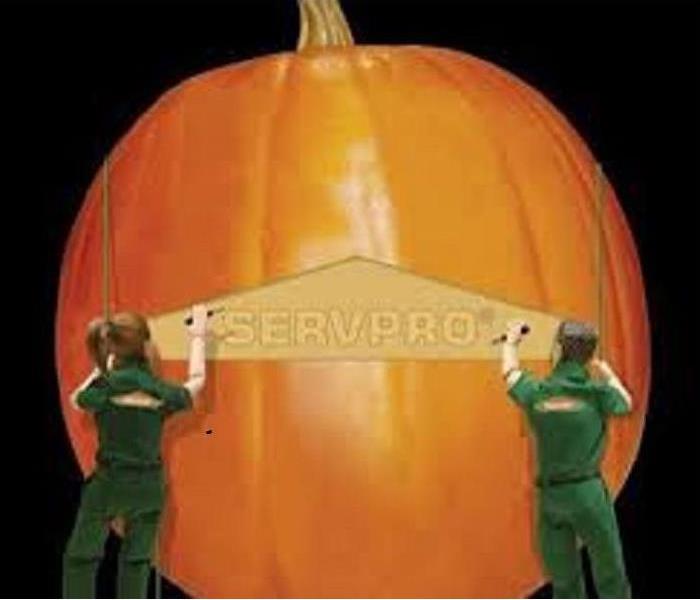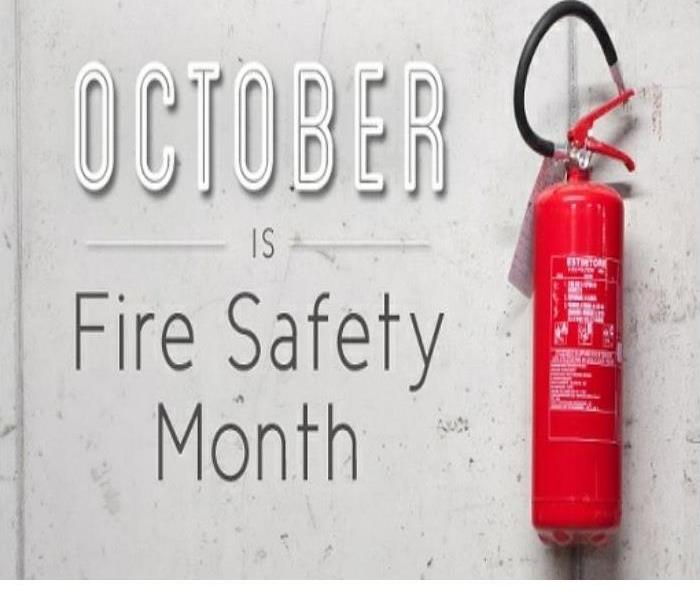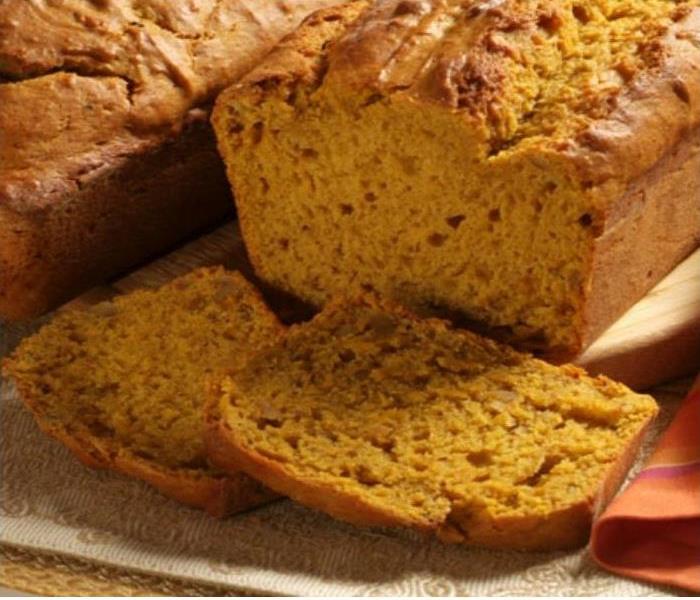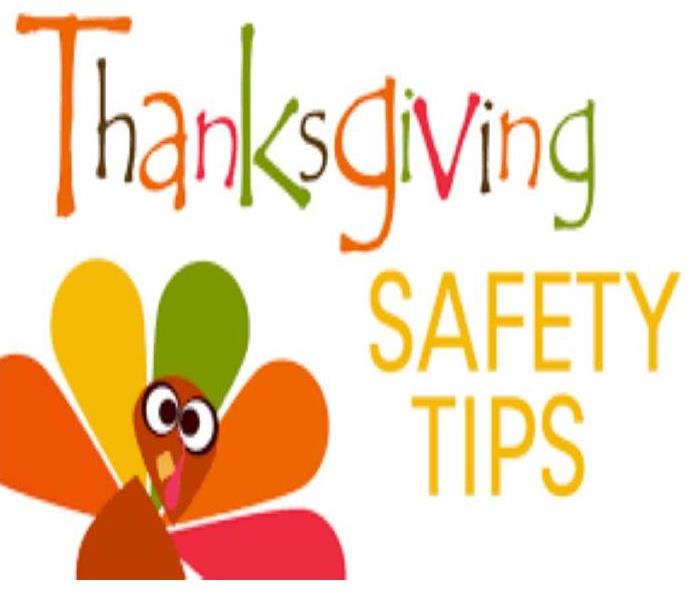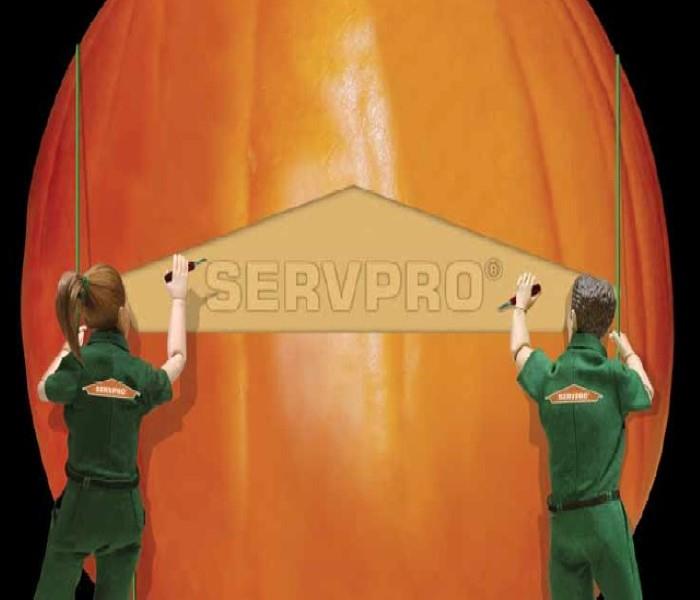Archived Community Blog Posts
SERVPRO Gives Back: Supporting the Community Through Rotary Club of Peabody and NSCAP
12/23/2024 (Permalink)
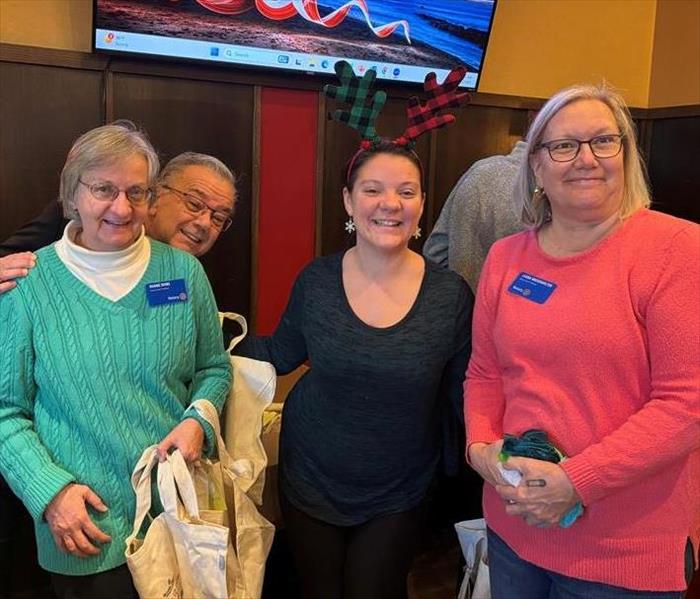 SERVPRO donating hand sanitizers to NSCAP
SERVPRO donating hand sanitizers to NSCAP
At SERVPRO®, we believe that giving back to the community is an essential part of who we are. That’s why we’re proud to support the Rotary Club of Peabody in their mission to make a positive impact. Recently, we had the opportunity to collaborate on an initiative that directly benefits the North Shore Community Action Programs (NSCAP).
Donating Hand Sanitizers to Support Local Families
Through the Rotary Club of Peabody, SERVPRO of Salem partnered to donate hand sanitizers to NSCAP. This vital donation helps low-income families and individuals maintain hygiene and health during challenging times. Clean hands are a key part of preventing illness, and we’re thrilled to play a role in fostering healthier, safer communities.
About NSCAP: Empowering Self-Sufficiency
NSCAP provides a wide range of social services designed to empower individuals and families to achieve self-sufficiency. From housing assistance to education and job training, NSCAP offers programs that address the root causes of poverty and provide a path toward stability. Their work impacts countless lives in our community, and SERVPRO is honored to support their efforts.
A Shared Commitment to Service
As a member of the Rotary Club of Peabody, SERVPRO shares the Rotary’s dedication to “Service Above Self.” Partnering with organizations like NSCAP aligns perfectly with our values of supporting the communities we serve. It’s our way of not just restoring homes and businesses but also contributing to the greater well-being of our neighbors.
The Power of Community Collaboration
This initiative is a testament to what we can achieve when local businesses, service organizations, and nonprofits come together. By pooling our resources and efforts, we can make a tangible difference for those who need it most. Whether it’s helping families access essential supplies or supporting long-term initiatives that promote self-sufficiency, every contribution counts.
Continuing the Mission
SERVPRO of Lynn/Lynnfield is committed to continuing our support for the local community. Whether it’s through donations, volunteer work, or partnerships, we’re always looking for ways to give back. We’re proud to stand alongside organizations like the Rotary Club of Peabody and NSCAP as we work together to create a brighter future for all.
Join Us in Making a Difference
We encourage everyone to get involved in their communities. Whether it’s through donating time, resources, or expertise, there are countless ways to make an impact.
Together, we can make a difference. Thank you for allowing SERVPRO to be a part of this wonderful community!
Community Heroes: SERVPRO and the Lynn Fire Department
5/13/2024 (Permalink)
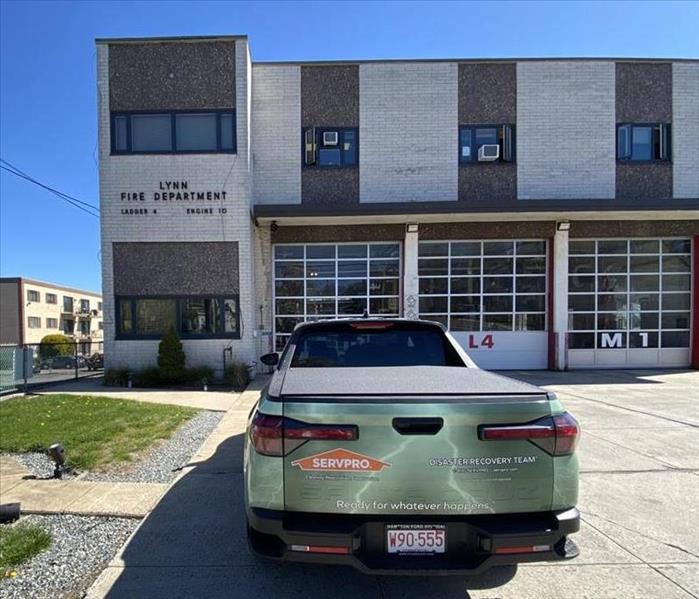 SERVPRO and the Lynn Fire Department are more than just service providers – they are beacons of hope!
SERVPRO and the Lynn Fire Department are more than just service providers – they are beacons of hope!
In the heart of Lynn, Massachusetts, a vibrant community thrives, supported by the unwavering dedication of two pillars: SERVPRO and the Lynn Fire Department. These entities, though distinct in their missions, share a common goal – to serve and protect the residents of Lynn in times of crisis. Their partnership is not merely a professional arrangement; it's a testament to the power of collaboration and community spirit.
SERVPRO®, with its expertise in disaster recovery and restoration, is the guardian angel of Lynn's homes and businesses. When disaster strikes – whether it's a burst pipe flooding a basement or a devastating fire tearing through a building – SERVPRO is there, ready to spring into action. With their skilled technicians and state-of-the-art equipment, they work tirelessly to restore properties to their former glory, offering a ray of hope amidst the chaos.
But SERVPRO's impact extends far beyond their restoration efforts. They are staunch supporters of the Lynn community, actively engaging with local organizations and initiatives to give back. Whether it's sponsoring community events, volunteering their time, or providing educational resources on disaster preparedness, SERVPRO is committed to making a positive difference in the lives of Lynn residents.
And then there's the Lynn Fire Department, the brave men and women who answer the call of duty with unwavering courage and dedication. Day in and day out, they put their lives on the line to keep Lynn safe from harm. From battling blazes to rescuing trapped individuals, their selflessness knows no bounds. But their role goes beyond fighting fires; they are also first responders in medical emergencies, providing critical care to those in need.
What truly sets the Lynn Fire Department apart, however, is their deep connection to the community they serve. They are more than just firefighters; they are neighbors, friends, and trusted allies. They actively engage with residents through outreach programs, fire safety education initiatives, and community events, fostering a sense of trust and camaraderie that is invaluable in times of crisis.
But perhaps the most remarkable aspect of the relationship between SERVPRO and the Lynn Fire Department is the way they complement each other. Together, they form a dynamic duo, each bringing their unique strengths to the table to ensure the safety and well-being of Lynn residents. Whether it's mitigating the aftermath of a disaster or preventing one altogether, their partnership is a shining example of what can be achieved when community heroes come together for the greater good.
In Lynn, Massachusetts, SERVPRO and the Lynn Fire Department are more than just service providers – they are beacons of hope, symbols of resilience, and guardians of the community. Their commitment to serving others knows no bounds, and their impact reverberates far beyond the borders of this bustling city. Together, they stand as a testament to the power of collaboration, compassion, and community spirit.
SERVPRO® handles water damage in classrooms across the country.
12/26/2023 (Permalink)
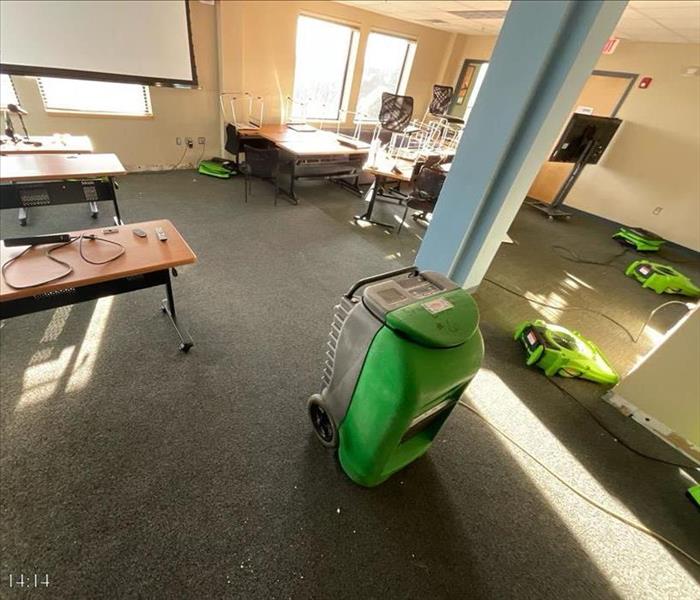 SERVPRO® professionals work closely with school personnel to ensure a smooth and efficient restoration process that minimizes disruptions.
SERVPRO® professionals work closely with school personnel to ensure a smooth and efficient restoration process that minimizes disruptions.
SERVPRO® is known for providing water damage restoration and cleanup services, including services for commercial properties such as schools. SERVPRO® franchises across the country are equipped to handle various types of water damage scenarios, offering a range of services to address the specific needs of educational institutions.
Here's a general overview of how SERVPRO® might handle water damage in schools:
Assessment and Inspection:
- SERVPRO® professionals typically begin by assessing the extent of the water damage. This involves inspecting affected areas, identifying the source of the water intrusion, and determining the category of water (clean, gray, or black) to assess potential health risks.
Water Extraction:
- The removal of standing water is a critical step in the restoration process. SERVPRO® utilizes pumps and extraction equipment to efficiently remove water from affected areas.
Drying and Dehumidification:
- Air movers and dehumidifiers are employed to dry out the affected spaces thoroughly. This helps prevent secondary issues like mold growth and structural damage.
Cleaning and Sanitization:
- SERVPRO® professionals clean and sanitize affected surfaces, contents, and materials to ensure a safe and hygienic environment. This may involve using antimicrobial agents to control microbial growth.
Content Restoration:
- Items and contents affected by water damage are evaluated for restoration. SERVPRO® may employ various techniques to restore items such as documents, electronics, and furniture.
Mold Remediation:
- If mold is detected or becomes a concern during the restoration process, SERVPRO® can provide mold remediation services to address the issue and prevent its further spread.
Coordination with School Staff:
- Communication with school administrators, staff, and other stakeholders is essential throughout the restoration process. SERVPRO® professionals work closely with school personnel to ensure a smooth and efficient restoration process that minimizes disruption to educational activities.
Documentation for Insurance Claims:
- SERVPRO® assists in documenting the damage for insurance purposes, providing detailed reports and photographs to support claims.
It's important to note that the specific approach may vary based on the unique circumstances of each water damage incident. For the most accurate and current information regarding SERVPRO®'s services for schools and other commercial properties, it is recommended to contact the local SERVPRO® franchise or visit the official SERVPRO® website.
Restoration needs for the month of June
6/22/2023 (Permalink)
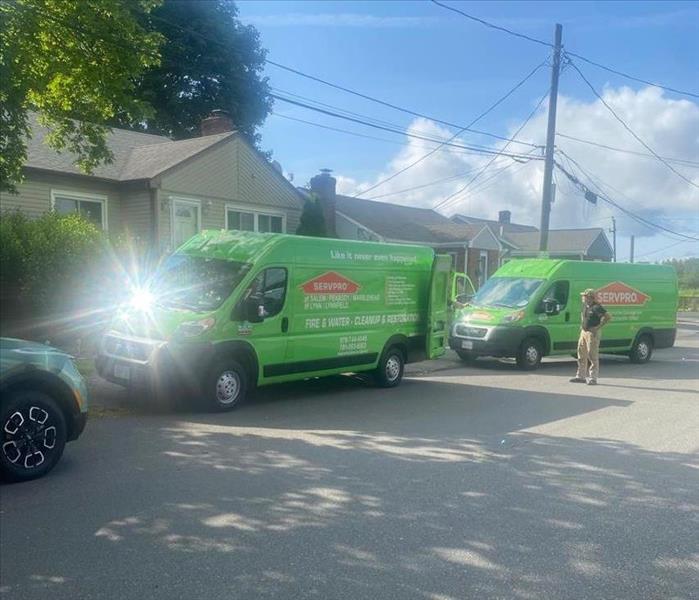 Our team is ready for anything!
Our team is ready for anything!
In the month of June, some common restoration needs for residences can include:
Water Damage Restoration: June often marks the beginning of the rainy season in many regions. Heavy rainfall, storms, or plumbing issues can lead to water damage in homes, such as flooded basements, roof leaks, or burst pipes. Water damage restoration involves extracting water, drying the affected areas, and restoring any damaged structures or belongings.
Mold Remediation: Warm and humid weather in June can create an environment conducive to mold growth. If there has been excess moisture or water damage in a home, it can lead to mold infestation. Mold remediation involves identifying and addressing the source of moisture, removing mold colonies, and restoring the affected areas to a healthy condition.
Fire Damage Restoration: While fire incidents can happen at any time, certain activities like barbecues, bonfires, or firework displays during the summer months can increase the risk of fire-related accidents. Fire damage restoration includes cleaning up soot and smoke residue, repairing or rebuilding damaged structures, and restoring belongings affected by fire and water used to extinguish the fire.
Storm Damage Restoration: June may also bring severe weather conditions, including thunderstorms, hurricanes, or tornadoes, depending on the region. These events can cause significant damage to residential properties, including roof damage, structural issues, fallen trees, and flooding. Storm damage restoration involves assessing and repairing the damages caused by severe weather events.
HVAC System Maintenance: As temperatures rise in June, homeowners often rely on air conditioning systems to maintain a comfortable indoor environment. It's crucial to ensure that HVAC systems are functioning properly and well-maintained. Restoration services may include cleaning or repairing HVAC systems, ductwork, and vents, to ensure optimal performance and indoor air quality.
It's important to note that restoration needs can vary based on geographical location, climate, and individual circumstances. If you have a specific restoration requirement or concern, it's best to consult with professionals in your area who can assess the situation and provide appropriate recommendations and services.
16 Pumpkin Facts That'll Make You Say "Oh My Gourd"
10/12/2018 (Permalink)
- The word "pumpkin" showed up for the first time in the fairy tale Cinderella.
A French explorer in 1584 first called them "gros melons," which was translated into English as "pompions," according to history. It wasn't until the 17th century that they were first referred to as pumpkins.
- The original jack-o'-lanterns were made withturnips and potatoes by the Irish.
In England, they used large beets and lit them with embers to ward off evil spirits. Irish immigrants brought their customs to America, but found that pumpkins were much easier to carve.
- Pumpkins are grown on every continent except Antarctica.
Which makes quite a bit of sense considering, oh you know, Antarctica is a 24/7 icy tundra.
- Over 1.5 billion pounds of pumpkin are produced each year in the United States.
The top pumpkin producing states are Illinois, Indiana, Ohio, Pennsylvania, and California.
- Morton, Illinois, calls itself the "Pumpkin Capital of the World"
According to the University of Illinois, 95% of the pumpkins grown in the U.S. are harvested in Illinois soil. Morton is allegedly responsible for 80% of the world's canned pumpkin production.
- 80% of the U.S.'s pumpkin crop is available during October.
Out of the total 1.5 billion pounds, over 800 million pumpkins are ripe for the picking in a single month of the year.
- The world's heaviest pumpkin weighed over 2,600 pounds.
It was grown in Germany and presented in October 2016.
- The largest pumpkin pie ever baked weighed 3,699 pounds.
Pumpkin pie originated in the colonies, just not as we know it today. Colonists would cut the tops of pumpkins off, remove the seeds, fill the pumpkins with milk, spices, and honey, then bake them in hot ashes.
- Pumpkin-flavored sales totaled over $414 million in 2017.
But people are starting to opt for fresh pumpkin instead, according to Nielsen Retail Measurement Services. Some pumpkin-flavored products have seen consistent growth over recent years, including cereal, coffee, and even dog food.
- Each pumpkin has about 500 seeds.
They take between 90 and 120 days to grow, which is why it's recommended to plant them between May and July. High in iron, they can be roasted to eat. The flowers that grow on pumpkin vines are also edible.
- Delaware used to host an annual "Punkin Chunkin" championship.
Teams competed in a pumpkin launching competition, where pumpkins were shot almost 5,000 feet from an air cannon. The event was canceled in 2017 after there was a tragic accident the year before.
- There are more than 45 different varieties of pumpkin.
They range in color like red, yellow, and green, and have names like Hooligan, Cotton Candy, and Orange Smoothie.
- Pumpkins are technically
- fruit.
More specifically, they are a winter squash in the family Cucurbitacae, which includes cucumbers and melons. But because they're savory, many people just call them vegetables anyway.
- Every single part of a pumpkin is edible.
Yep, you can eat the skin, leaves, flowers, pulp, seeds, and even the stem!
- Pumpkins are 90% water, which makes them a low-calorie food.
One cup of canned pumpkin has less than 100 calories and only half a gram of fat. In comparison, the same serving size of sweet potato has triple the calories. They also have more fiber than kale, more potassium than bananas, and are full of heart-healthy magnesium and iron.
- Surprisingly, pumpkin pie isn't America's favorite.
According to a survey by the American Pie Council, it's apple that takes the cake (um, pie?) — 19% of Americans say it's their pie of choice. Pumpkin is in second place with a respectable 13%.
https://www.goodhousekeeping.com/health/diet-nutrition/a22544/facts-about-pumpkins/
Halloween Safety Tips
10/25/2017 (Permalink)
Trick-or-Treaters
- Be bright at night – wear retro-reflective tape on costumes and treat buckets to improve visibility to motorists and others.
- Wear disguises that don’t obstruct vision, and avoid facemasks. Instead, use nontoxic face paint. Also, watch the length of billowy costumes to help avoid tripping.
- Ensure any props are flexible and blunt-tipped to avoid injury from tripping or horseplay.
- Carry a flashlight containing fresh batteries, and place it facedown in the treat bucket to free up one hand. Never shine it into the eyes of oncoming drivers.
- Stay on sidewalks and avoid walking in streets if possible.
- If there are no sidewalks, walk on the left side of the road, facing traffic.
- Look both ways and listen for traffic before crossing the street.
- Cross streets only at the corner, and never cross between parked vehicles or mid-block.
- Trick-or-treat in a group if someone older cannot go with you.
- Tell your parents where you are going.
Parents
- Ensure an adult or older, responsible youth is available to supervise children under age 12.
- Plan and discuss the route your trick-or-treaters will follow.
- Instruct children to travel only in familiar areas and along established routes.
- Teach children to stop only at well-lit houses and to never to enter a stranger’s home or garage.
- Establish a time for children to return home.
- Tell children not to eat any treats until they get home.
- Review trick-or-treating safety precautions, including pedestrian and traffic safety rules.
- Make sure Halloween costumes are flame-retardant and visible with retro-reflective material.
Motorists
- Slow down in residential neighborhoods and obey all traffic signs and signals. Drive at least 5 mph below the posted speed limit to give yourself extra time to react to children who may dart into the street.
- Watch for children walking on roadways, medians and curbs. In dark costumes, they’ll be harder to see at night.
- Look for children crossing the street. They may not be paying attention to traffic and cross the street mid-block or between parked cars.
- Carefully enter and exit driveways and alleys.
- Turn on your headlights to make yourself more visible – even in the daylight.
- Broaden your scanning by looking for children left and right into yards and front porches.
October is Fire Prevention Month
9/26/2017 (Permalink)
Home Safety Checklist
Smoke Alarms
? There is one smoke alarm on every level of the home and inside and outside each sleeping area.
? Smoke alarms are tested and cleaned monthly.
? Smoke alarm batteries are changed as needed.
? Smoke alarms are less than 10 years old.
Cooking Safety
? Cooking area is free from items that can catch fire.
? Kitchen stove hood is clean and vented to the outside.
? Pots are not left unattended on the stove.
Electrical & Appliance Safety
? Electrical cords do not run under rugs.
? Electrical cords are not frayed or cracked.
? Circuit-protected, multi-prong adapters are used for additional outlets.
? Large and small appliances are plugged directly into wall outlets.
? Clothes dryer lint filter and venting system are clean.
Candle Safety
? Candles are in sturdy fire-proof containers that won’t be tipped over.
? All candles are extinguished before going to bed or leaving the room.
? Children and pets are never left unattended with candles.
Carbon Monoxide Alarms
Carbon monoxide alarms are located on each level of the home.
? Carbon monoxide alarms are less than 7 years old.
Smoking Safety
Family members who smoke only buy fire-safe cigarettes and smoke outside.
? Matches and lighters are secured out of children’s sight.
? Ashtrays are large, deep and kept away from items that can catch fire.
? Ashtrays are emptied into a container that will not burn.
Heating Safety
? Chimney and furnace are cleaned and inspected yearly.
? Furniture and other items that can catch fire are at least 3 feet from fireplaces, wall heaters, baseboards, and space heaters.
? Fireplace and barbecue ashes are placed outdoors in a covered metal container at least 3 feet from anything that can catch fire.
? Extension cords are never used with space heaters.
? Heaters are approved by a national testing laboratory and have tip-over shut-off function.
Home Escape Plan
? Have two ways out of each room.
? Know to crawl low to the floor when escaping to avoid toxic smoke.
? Know that once you’re out, stay out.
? Know where to meet after the escape.
? Meeting place should be near the front of your home, so firefighters know you are out.
? Practice your fire escape plan.
Oh My Gourd ~ World's Best Pumpkin Bread!!
9/26/2017 (Permalink)
It's that time of year when the weather starts to cool down, the leaves start changing and you can find everything pumpkin that we've missed since last fall. What better way than to start off with a nice pumpkin bread.World's Best Pumpkin Bread
Prep time: 5 mins
Cook time: 45 mins
Total time: 50 mins
Serves: 2 loaves
Ingredients
- 2 Cups Libby’s Pure Pumpkin
- 3 Cups Sugar
- 1 Cup Canola or Vegetable Oil
- 2/3 Cup Water
- 4 eggs
- 3 1/3 Cups Flour
- 2 tsp. Baking Soda
- 5 tsp. Salt
- 1 tsp. Ground Cinnamon
- 1 tsp. Ground Nutmeg
Instructions
- Mix Pumpkin, Sugar, Oil, Water, and Eggs in large mixing bowl until well combined.
- In medium mixing bowl, combine Flour, Baking Soda, Salt, Cinnamon, and Nutmeg. Stir well, then gradually pour into large bowl of pumpkin mixture. Stir well to combine completely.
- Spray TWO 9×5 Non-stick Loaf Pans with Pam Cooking Spray.
- Pour mixture evenly into loaf pans.
- Bake at 350 degrees for 45 – 55 minutes, or until done and a toothpick inserted in center comes out clean.
ENJOY!!
Thanksgiving Safety Tips
11/17/2016 (Permalink)
Thanksgiving is almost here and across the country, Americans are gearing up for one of the most spectacular feasts of the year. Thanksgiving is a holiday that brings family and friends together to share good food, conversation, and laughter. In the midst of all this festive activity, it’s important to remember that there are health hazards associated with the holiday, including an increased chance of food poisoning, kitchen fires, and travel incidents.
Taking just a few minutes to read these Thanksgiving safety tips could mean the difference between enjoying the holiday and having a turkey dinner end in disaster.
Fire Safety
The average number of cooking fires on Thanksgiving is TRIPLE that of a normal day. Here a few simple ways to avoid fires:
- “Stand by your pan” when cooking. Never leave food, grease, or oils cooking on the stovetop unattended.
- Pot holders, oven mitts, food wrappers, and other things that can catch fire should be kept away from the stove.
- Children should also be kept away from hot stoves and paid particular attention to when they are in the kitchen.
- Facing pot handles towards the rear of the stove can save them from being knocked over and scalding people nearby.
- Long sleeves and loose clothing should be avoided while cooking as it can easily catch fire. Following these food safety tips can keep any Thanksgiving meal safe from bacteria and keep your family and friends from getting sick:
Food Poisoning
- Safely cooking a turkey starts with correctly defrosting it; place your bird on a tray or pan to catch any juices and keep it refrigerated until it’s ready to cook.
- A 20-pound frozen turkey can take up to five days to thaw out so plan ahead.
- Turkeys need to be cooked to an internal temperate of 165 °F.
- Leftovers need to be refrigerated within two hours after serving. The Thanksgiving holiday is one of the busiest travel times of the year, and with all the excitement travelers can become more focused on celebrations than getting to their destination as safely as possible. Following these travel tips will keep everyone safe on the road and in the air:
Thanksgiving Travel Safety
Halloween Safety Tips
10/18/2016 (Permalink)
Trick-or-Treaters
- Be bright at night – wear retro-reflective tape on costumes and treat buckets to improve visibility to motorists and others.
- Wear disguises that don’t obstruct vision, and avoid facemasks. Instead, use nontoxic face paint. Also, watch the length of billowy costumes to help avoid tripping.
- Ensure any props are flexible and blunt-tipped to avoid injury from tripping or horseplay.
- Carry a flashlight containing fresh batteries, and place it facedown in the treat bucket to free up one hand. Never shine it into the eyes of oncoming drivers.
- Stay on sidewalks and avoid walking in streets if possible.
- If there are no sidewalks, walk on the left side of the road, facing traffic.
- Look both ways and listen for traffic before crossing the street.
- Cross streets only at the corner, and never cross between parked vehicles or mid-block.
- Trick-or-treat in a group if someone older cannot go with you.
- Tell your parents where you are going.
Parents
- Ensure an adult or older, responsible youth is available to supervise children under age 12.
- Plan and discuss the route your trick-or-treaters will follow.
- Instruct children to travel only in familiar areas and along established routes.
- Teach children to stop only at well-lit houses and to never to enter a stranger’s home or garage.
- Establish a time for children to return home.
- Tell children not to eat any treats until they get home.
- Review trick-or-treating safety precautions, including pedestrian and traffic safety rules.
- Make sure Halloween costumes are flame-retardant and visible with retro-reflective material.
Motorists
- Slow down in residential neighborhoods and obey all traffic signs and signals. Drive at least 5 mph below the posted speed limit to give yourself extra time to react to children who may dart into the street.
- Watch for children walking on roadways, medians and curbs. In dark costumes, they’ll be harder to see at night.
- Look for children crossing the street. They may not be paying attention to traffic and cross the street mid-block or between parked cars.
- Carefully enter and exit driveways and alleys.
- Turn on your headlights to make yourself more visible – even in the daylight.
- Broaden your scanning by looking for children left and right into yards and front porches.





 24/7 Emergency Service
24/7 Emergency Service




